Bussiness
Glastonbury’s Hayes Pavilion “pushes the boundaries” of what bioplastic can do
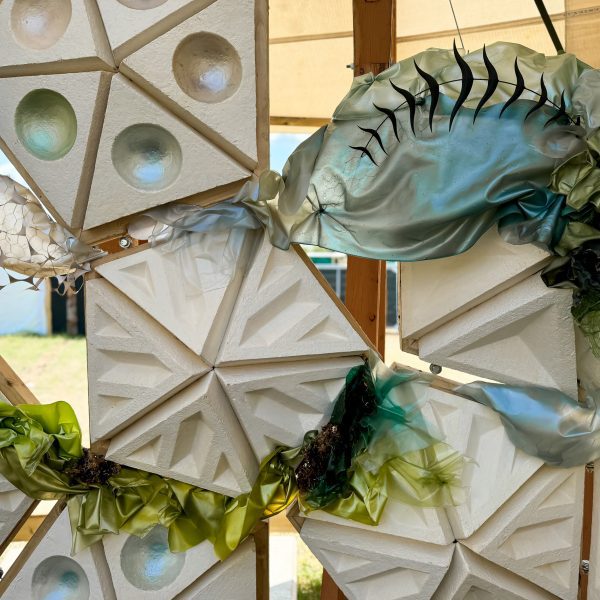
Biodesign startup Re:Right Design has reprised its demountable Hayes Pavilion for this year’s Glastonbury festival, cladding it in a biomaterial made from seaweed to demonstrate how sets can be built without plastic.
The pavilion is returning to the world’s largest greenfield music festival for the second year running as part of its quest to explore how temporary event infrastructure could become more sustainable.
Following last year’s focus on prefabricated mycelium insulation panels, the latest edition of the Hayes Pavilion spotlights a backyard-compostable bioplastic made from seaweed.
The fossil-free material, developed by biodesigner Leksi Kostur over several years, was cast, coloured, laser-cut and engraved in different ways to explore the material’s creative potential and evoke the flora and fauna of tidal ecosystems.
“Our goal with these installations is to start showing what’s possible with these materials, practically and aesthetically,” said Kostur, who founded Re:Right together with set design veteran Simon Carroll.
“We’re pushing the boundaries in terms of size and scale,” Carroll added.
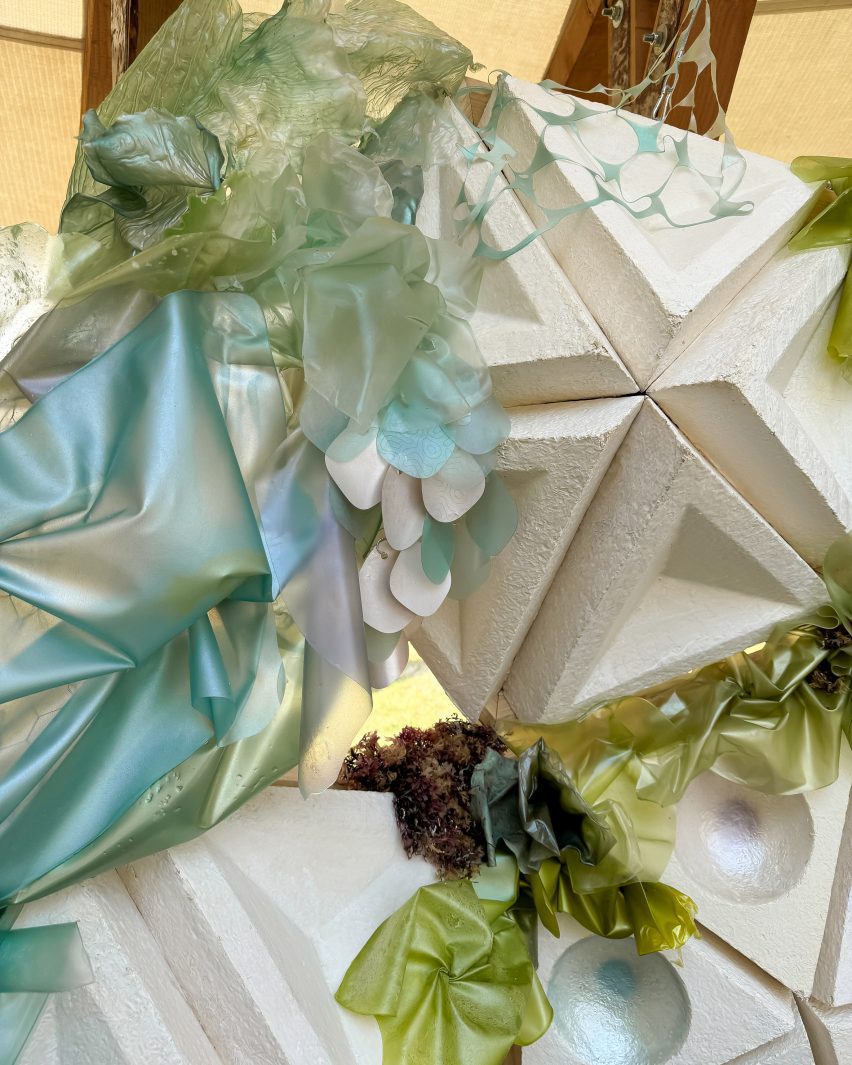
The aim is to find compostable materials that can rival the cheap, widely available plastics commonly used in set design, which live on in landfills for hundreds of years after they have fulfilled their purpose.
“A big part of our mission is to move material science out of the lab and into the real world,” Kostur told Dezeen.
“So we’re looking at the creative industries – mainly set building, scenic painting, festivals, events – where products and material turnover is really quick and lifecycle isn’t really considered at all.”
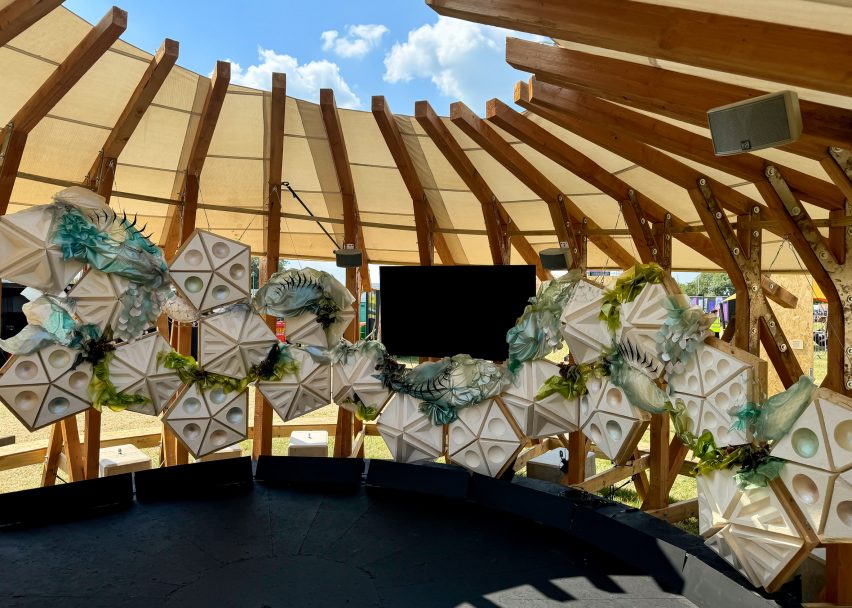
The Hayes Pavilion features a demountable structure that is reused every year and is made predominantly from reclaimed waste materials. Old festival marquees function as the canvas roof, while a storm-felled fir tree was used to form the exposed timber frame.
For this year’s Glastonbury, this structure is decorated with translucent, jelly-like sheets of bioplastic, manipulated to resemble foaming waves, seaweed fronds and laser-cut scales hung like mobiles.
Throughout the weekend, the pavilion will host a series of events including ocean sound baths and screenings of a new documentary by environmental streaming platform WaterBear, exploring coastal ecosystems such as mangroves, tidal marshes and seagrasses as a crucial carbon sink.
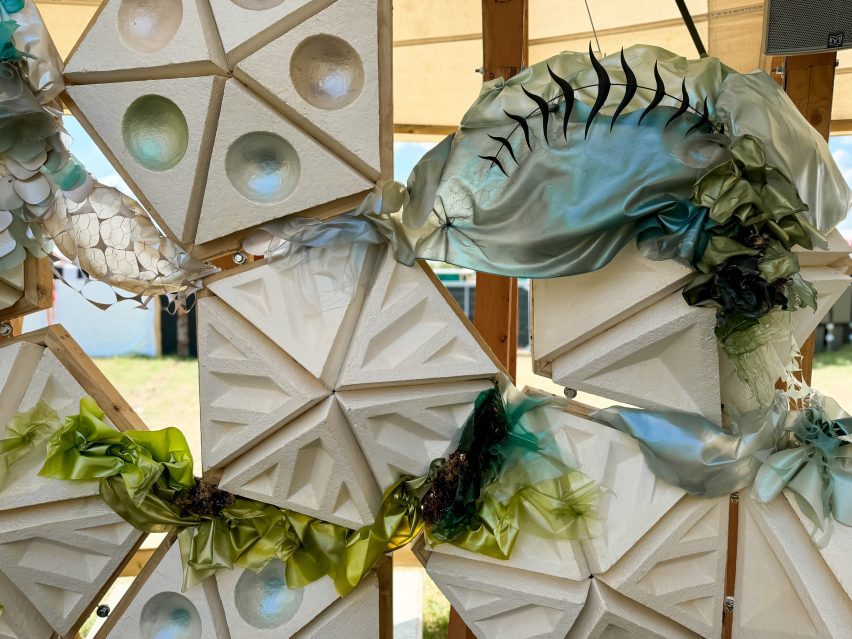
In this way, Re:Right hopes to familiarise festivalgoers with not just the biomaterial itself, but also with the ecosystem from which it hails.
“It’s important to note that we should absolutely not over-exploit the ocean like we’ve done with the land, and we need to build solid and truly sustainable farming methods based on research before we dream about saving the Earth with seaweed,” Kostur said.
“But if we are able to achieve that, there are so many potential benefits to seaweed. It can replace certain kinds of plastic, obviously, but it can also help decarbonize the economy, clean up the oceans, rebuild marine ecosystems and even feed people. It is quite a super material.”
The bioplastic featured in the installation is made using red and brown seaweed, sourced locally from around Europe and the UK. This is mixed with vegetable pigments like cabbage and beetroot for colour and sometimes with mineral pigments that provide a pearly opalescence.
Kostur’s minimal-intervention approach creates a material that – unlike a fossil plastic or an industrialised bioplastic like polylactic acid (PLA) – is entirely home-compostable and will degrade in soil in a matter of weeks, the studio claims.
“PLA is becoming very common but it requires industrialised composting, so temperatures in excess of 70 degrees, to break it down,” Carroll said. “That’s a huge energy input. Whereas what we’re doing will break down on its own.”
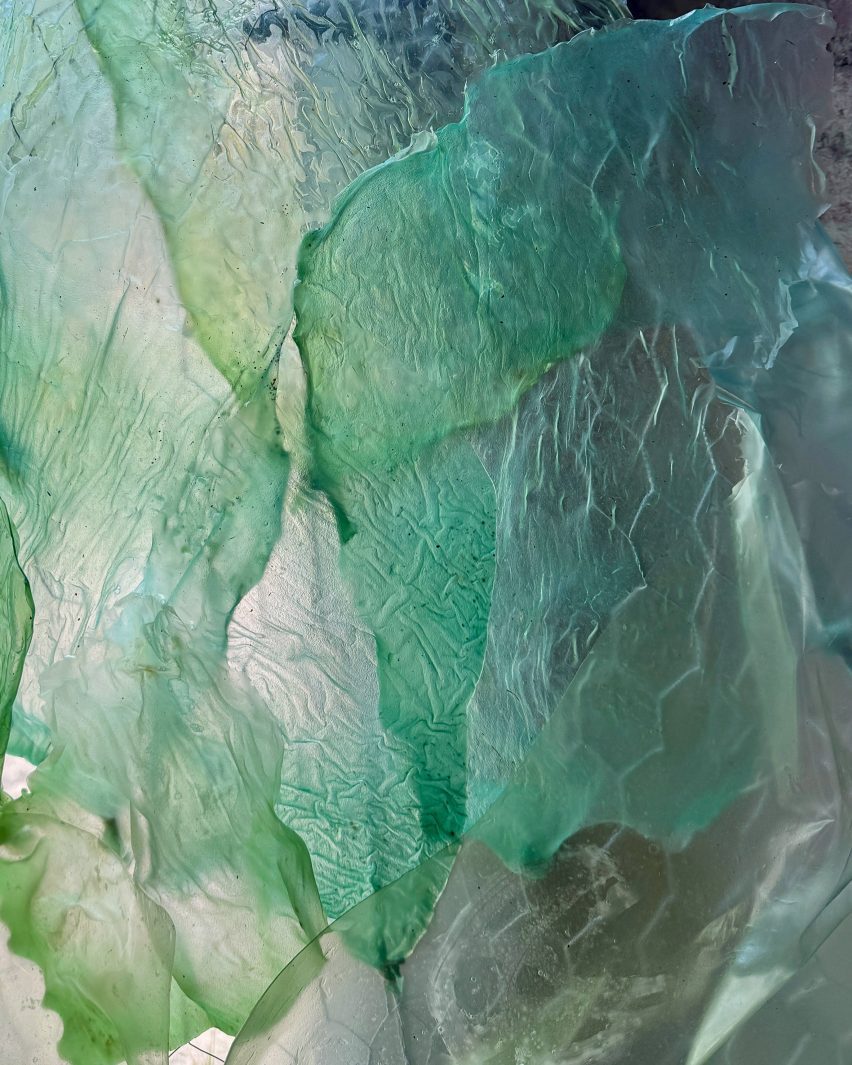
Mushroom mycelium has also made a comeback for this year’s edition of the Hayes Pavilion although this time in a secondary role, to provide the backing for the bioplastic.
To further evolve the material as an alternative to polystyrene in set building, Re:Right Design collaborated with mycelium packaging manufacturer Magical Mushroom Company to grow bespoke geometric cladding for the structure.
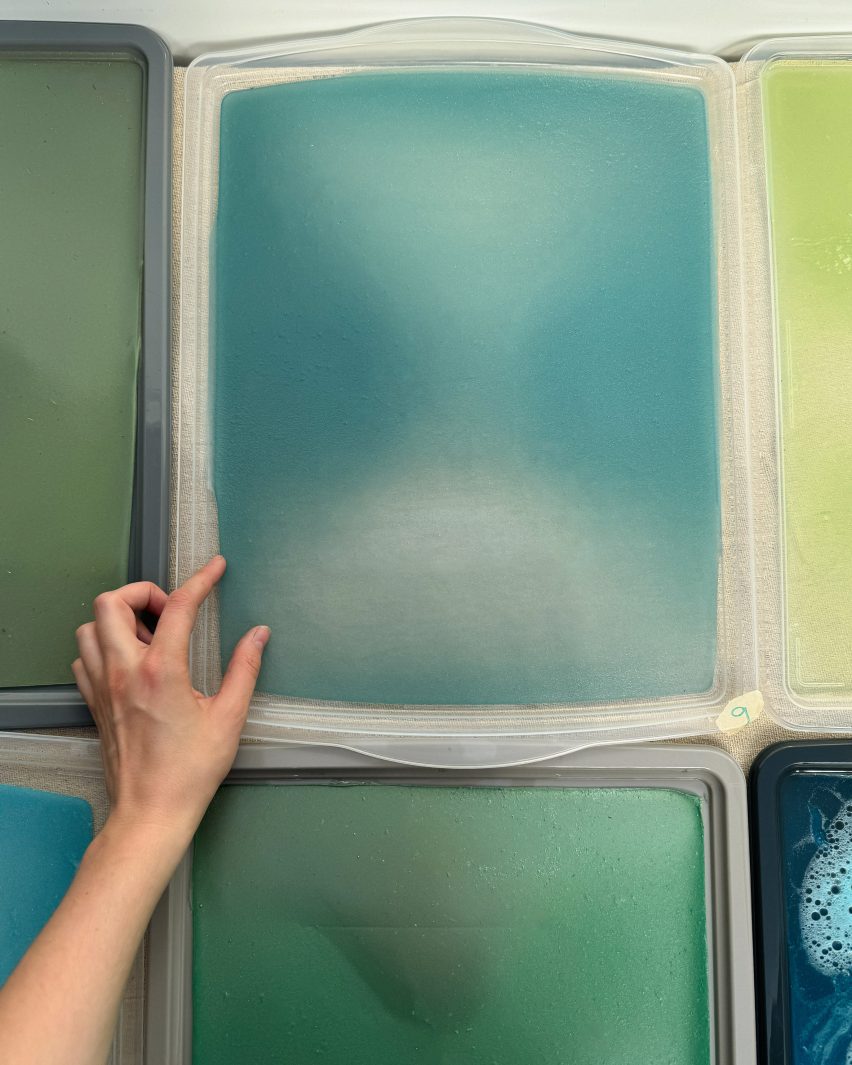
Carroll says this proved a more effective method than last year’s, which saw them try to cut, sand and glue prefabricated mycelium insulation panels into different shapes.
“The material responds much better to us not handling it too much,” he explained.
“We’re all feeding off each other and realising what these materials can and can’t do, which is ultimately pushing that boundary and that envelope.”
The mycelium is accompanied by acoustic panels made from hemp shiv — the woody inner portion of the hemp stalk, which is removed during industrial processing — courtesy of Hampshire company Erthly.
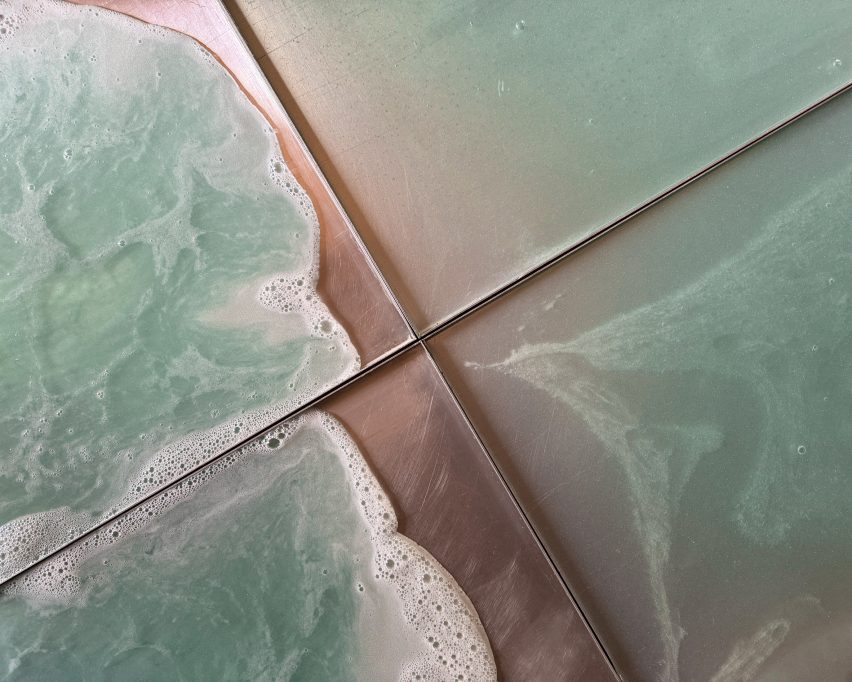
Following the Hayes Pavilion’s successful debut last year, Re:Right is also in talks with Danny Lennon, director of Footprint Scenery and sustainability chair at the Association of British Theatre Technicians, about creating a kind of material exchange or rental hub for London theatres to encourage more circular material use.
“Early doors but very, very exciting conversations,” Carroll said. “A lot of people were really surprised what we were able to achieve, which has been great.”
For more highlights from last year’s Glastonbury, including a glimpse at the Hayes Pavilion in situ, watch Dezeen’s exclusive video from the event.







:max_bytes(150000):strip_icc()/roundup-writereditor-loved-deals-tout-f5de51f85de145b2b1eb99cdb7b6cb84.jpg)


